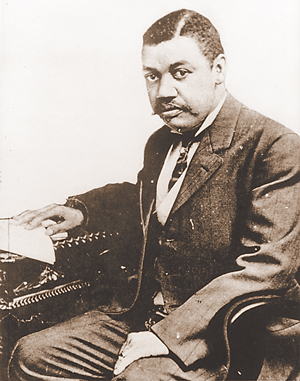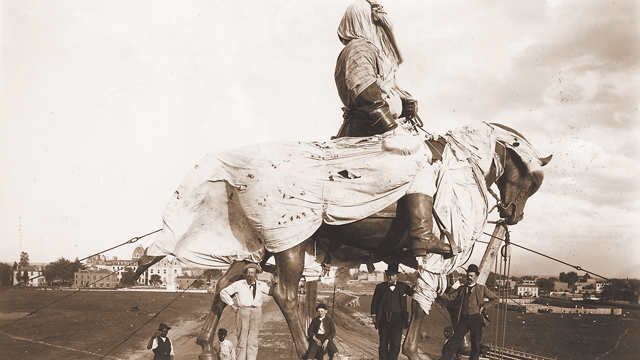As long as Richmonders have commemorated their past, disagreement has shaped how that past should be memorialized – if at all. The effort to build the Robert E. Lee equestrian statue, the first of the monuments on Monument Avenue, was no different.
On the day of Lee’s death, in 1870, fundraising efforts and public debate on the monument began. Still rebuilding from the ruins of the war, however, the city’s priorities did not involve grand-scale commemoration. It was not until the economic boom of the 1880s – fueled by the tobacco, flour, and iron industries – that the city and its citizens had the resources to make it happen. Seen by many in the white community as a way to honor Lee, the Civil War’s aging veterans, and the war dead, as well as salvage the city’s reputation from the literal ashes of war, the Lee Monument was inevitably bound up in strong emotions.
Early arguments arose over where the monument should be erected: Capitol Square, Monroe Park, Libby Hill, the Old Soldiers’ Home at the current VMFA site, Gamble’s Hill, or Hollywood Cemetery. For fifteen years, even the fundraising was fraught, with two competing organizations vying for citizens’ dollars: The Lee Monument Association (a veteran’s group) and the Ladies’ Lee Monument Association. By 1882, the Ladies’ Association had acquired a deed for erection on Libby Hill. A subsequent contest chose a winning artist’s model for that site. Confusion and public anger in 1886, however, compelled Governor Fitzhugh Lee (nephew of Robert E. Lee) to combine the two fundraising organizations under state supervision, which meant that he himself would head the new organization.

With that, public debate over the site intensified, with a new option surfacing when a man named Otway S. Allen offered a tract of land just west of the city, called the Allen Addition. Without any commanding views, historical relevance, or even easy accessibility, the flat, barren expanse presented a different option for commemoration: ostentatious Gilded Age development. In the Allen Addition plan, the city would create a wide boulevard, plant trees, pave sidewalks, and run water and gas lines to the then-remote western suburb. The park-like median, the Lee circle itself, and the sidewalks would be for public use, while Allen would sell lots on the avenue for private development. This plan was aggressively promoted by Governor Lee, a friend of Allen’s, as an opportunity for annexation, expanded public space, and increased revenue for the city.
Many Richmonders opposed this plan for a variety of reasons, including exploiting the war’s tragedy for private profit. Their concerns went unheeded by Governor Lee, who won city approval of the Allen plan in 1887. The second artist’s competition heightened tensions as Richmonders aimed their frustrations at the submissions. Angry editorials appeared in the newspaper, criticizing a rendering of Lee’s horse as being “too English” and artists’ inabilities to render everything from Lee’s hat to his general nobility. In another scandalous turn, a French sculptor named Jean Antonin Mercié won the contest. The seething, emotional public, however, was largely able to put aside their differences. After twenty years of effort, on May 30, 1890, approximately 100,000 spectators came from Richmond and beyond to see the monument’s unveiling.
But not even the completion of the statue could quell the debate over Confederate commemoration. The day after the unveiling, John Mitchell, Jr. published alternate perspectives in The Richmond Planet, the city’s black-run newspaper. The Planet criticized the existence of any Lee statue at all. Doubtless aware of the heightened emotions and dangers involved in this argument – this was the beginning of the repressive Jim Crow era, after all – Mitchell made no direct mention of slavery or race, but alluded to the forging of “heavier chains with which to be bound.” In an editorial published on the same day, he argued about the treasonous implications of the first of many Confederate monuments to follow: “This glorification of States Rights Doctrine – the right of secession, and the honoring of men who represented that cause, fosters in this Republic the spirit of Rebellion and will ultimately result in handing down to generations unborn a legacy of treason and blood … it serves to reopen the wound of war.” The title of Mitchell’s editorial perfectly summed up a debate that continues today: “What It Means.”
Photos: Robert A. Lancaster, Jr. Collection, The Valentine





